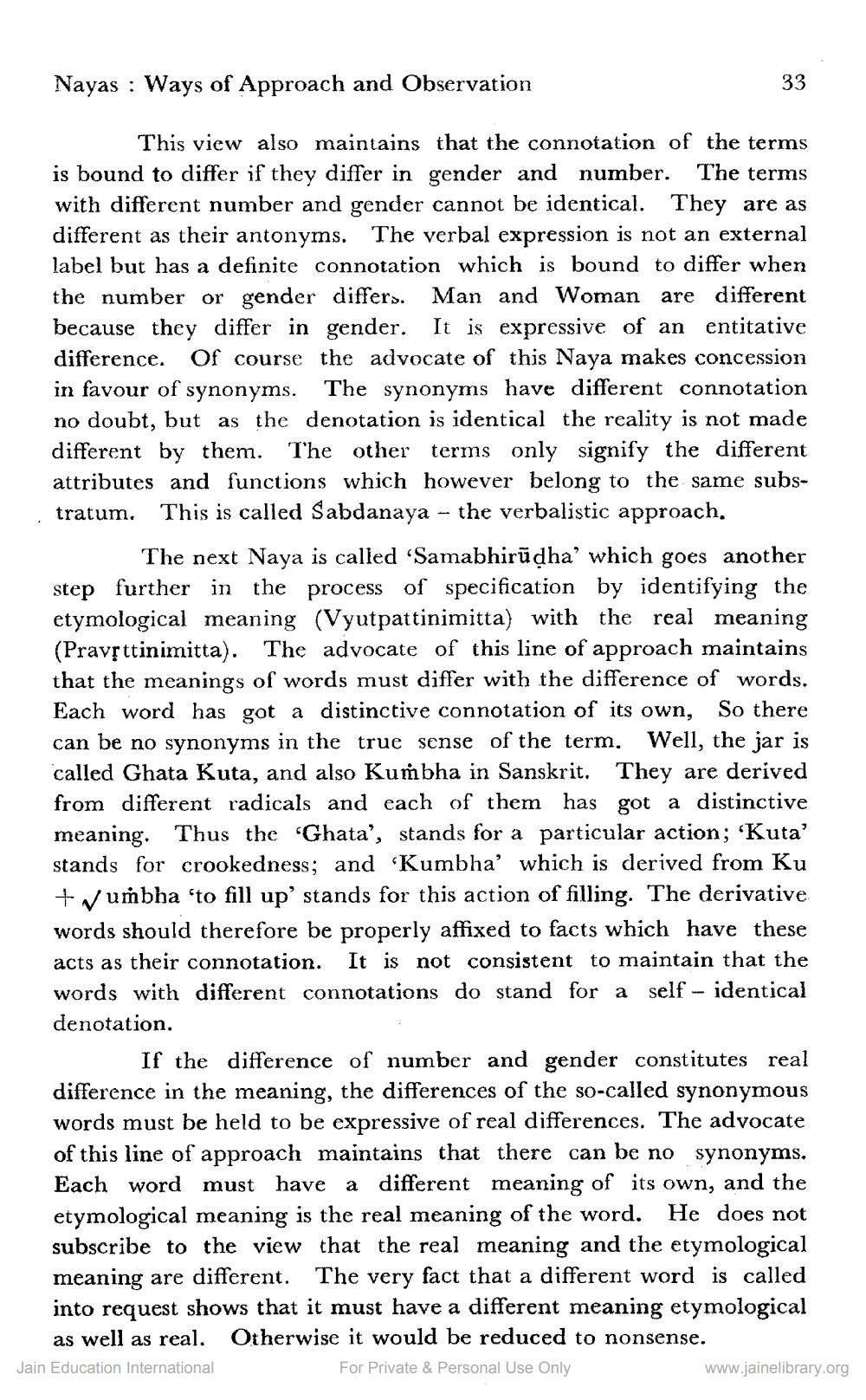________________
Nayas : Ways of Approach and Observation
33
This view also maintains that the connotation of the terms is bound to differ if they differ in gender and number. The terms with different number and gender cannot be identical. They are as different as their antonyms. The verbal expression is not an external label but has a definite connotation which is bound to differ when the number or gender differs. Man and Woman are different because they differ in gender. It is expressive of an entitative difference. Of course the advocate of this Naya makes concession in favour of synonyms. The synonyms have different connotation no doubt, but as the denotation is identical the reality is not made different by them. The other terms only signify the different attributes and functions which however belong to the same substratum. This is called Sabdanaya - the verbalistic approach.
The next Naya is called “Samabhirūdha' which goes another step further in the process of specification by identifying the etymological meaning (Vyutpattinimitta) with the real meaning (Pravșttinimitta). The advocate of this line of approach maintains that the meanings of words must differ with the difference of words. Each word has got a distinctive connotation of its own, So there can be no synonyms in the true sense of the term. Well, the jar is called Ghata Kuta, and also Kumbha in Sanskrit. They are derived from different radicals and each of them has got a distinctive meaning. Thus the 'Ghata', stands for a particular action; ‘Kuta' stands for crookedness; and Kumbha' which is derived from Ku
+umbha 'to fill up' stands for this action of filling. The derivative words should therefore be properly affixed to facts which have these acts as their connotation. It is not consistent to maintain that the words with different connotations do stand for a self – identical denotation.
If the difference of number and gender constitutes real difference in the meaning, the differences of the so-called synonymous words must be held to be expressive of real differences. The advocate of this line of approach maintains that there can be no synonyms. Each word must have a different meaning of its own, and the etymological meaning is the real meaning of the word. He does not subscribe to the view that the real meaning and the etymological meaning are different. The very fact that a different word is called into request shows that it must have a different meaning etymological
as well as real. Otherwise it would be reduced to nonsense. Jain Education International For Private & Personal Use Only
www.jainelibrary.org




